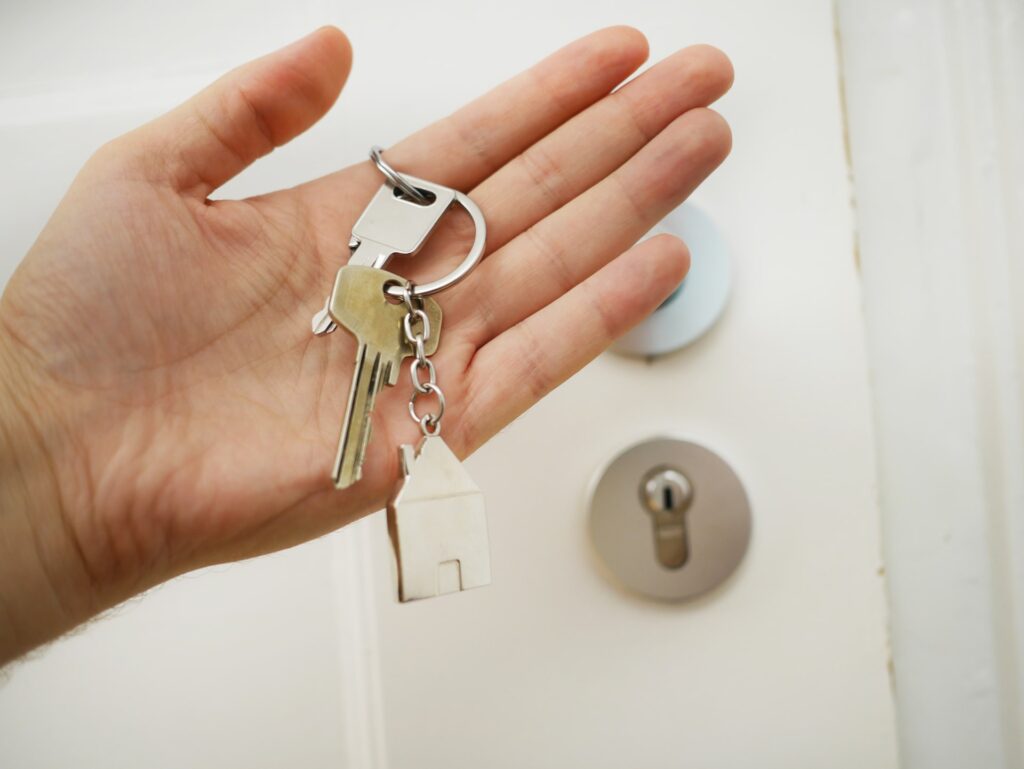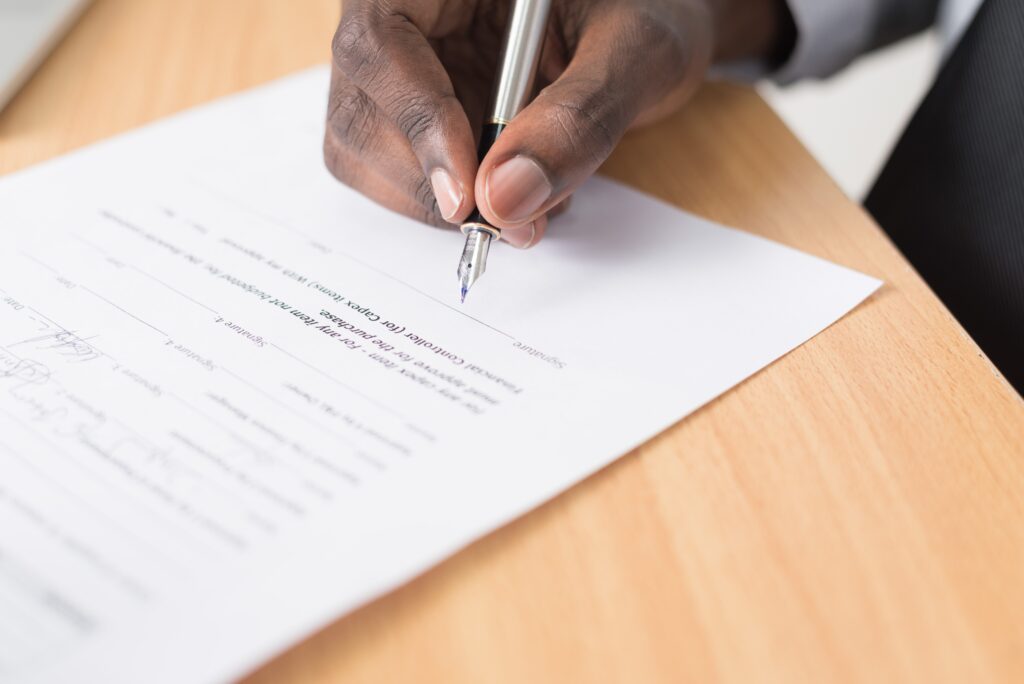
The monthly rent payments that are made as part of a lease agreement between a tenant and landlord are simple enough to understand. The lease agreement will contain the exact amount of rent that the tenant must pay every month. If these payments are made on time, the tenant can continue to live in the unit.
Security deposits aren’t always as straightforward. When a tenant makes this payment, it isn’t considered part of their monthly rent. This deposit is an amount of money that the tenant must pay either before or at the beginning of their lease. Many landlords require a security deposit alongside the first month of rent.
The security deposit will be held by the landlord throughout the entire rental period. Once the lease agreement comes to an end, the landlord will need to return the money to the tenant. The landlord can, however, hold onto some of the rental deposit for itemized deductions related to damages in the apartment. If the apartment hasn’t been damaged, the tenant has the right to reclaim their full deposit. This guide details everything you need to know about landlords that hold security deposits in California.

Understanding the Law Behind Security Deposits
California has comprehensive rules about how security deposits must be handled by landlords and tenants alike. When a tenant provides a security deposit, it must always be refundable unless the landlord can legally justify deductions.
The landlord is effectively holding the security deposit for the tenant until they move out. When a landlord sells a property, they must transfer the security deposit to the new owner or return it to the tenant.
Limits on Security Deposit Amounts
California law places limits on how large the security deposit can be. Before July 1, 2024, the limit was two times the amount of monthly rent. This limit increased to three times the monthly rent for furnished units. As of July 1, 2024, landlords can only ask for one month’s worth of rent. However, small landlords may be able to claim an exception to this rule.
For example, let’s say that a landlord has one rental property that contains less than four total units for rent. In this scenario, the limit increases to two times the monthly rent. This exception is only possible if the landlord is part of a limited liability company or a natural person. When a limited liability company owns the property, all members must be natural persons.
What Can Security Deposits Be Used For?
Landlords are only able to use the security deposits that they’re holding for specific reasons, which include the following:
- Unpaid rent
- Cleaning costs that are needed to restore the unit to its original condition
- Repairing any tenant-caused damages that extend beyond standard wear and tear
- Replacing or repairing personal property
The final allowable expense that refers to replacing personal property is only justifiable if it’s included in the lease agreement.
What Security Deposits CAN’T Be Used For
There are several expenses that security deposits can never be used for, which include the following:
- Damages that already existed when the tenant moved into the unit
- Unnecessary or unreasonable expenses
- Standard wear and tear
Tenant’s Right to Pre-Move-Out Inspection
Every tenant in California has the right to request a pre-move-out inspection. Once a landlord learns that one of their tenants is planning to move, they must notify them of their right to request an inspection. After this inspection, the tenant will have a chance to make the necessary fixes and avoid additional charges. When a tenant requests this type of inspection, it must be performed within two weeks before the move-out date.
Keep in mind that the tenant can be in the unit during the inspection. It’s also important to understand that the landlord is required to identify the damages that they intend to deduct. The tenant should receive an itemized statement of all issues that need to be addressed.

The Final Inspection and Itemized Statement
In California, landlords are required to return deposits within 21 days after tenants move out. If a landlord makes some deductions, they will need to send an itemized statement alongside receipts of every expense. This statement doesn’t need to be sent if the itemized deductions total less than $125.
If the landlord performed the necessary repairs themselves, the statement must include a written description of the work that’s been done, the amount of time that was spent on it, and the hourly rate. When a professional does the work, a copy of their bill will need to be sent to the tenant.
If the work is expected to take more than 21 days to be completed, the statement must come with a good faith estimate of the final costs. Once the work is finished, the landlord will need to send a final statement as well as the remaining deposit within two weeks.
How to Dispute Unfair Deductions
Landlords sometimes attempt to deduct more money than they are legally allowed to. If you don’t agree with the deductions, consider making notes, taking photos, and providing the necessary evidence.
If the landlord doesn’t provide you with the amount of the security deposit that you’re owed, you can file a lawsuit in small claims court. In this lawsuit, you can challenge specific items that the landlord has deducted from your deposit. If you successfully plead your case, the court may award you three times the total amount of the attorney fees and security deposit.
Small Claims Court: A Solution for Disputes
If you choose to file a lawsuit as part of the small claims process, consider why you’re taking this legal action. For example, let’s say that the landlord has missed the three-week deadline for returning the deposit. In this situation, they have forfeited the right to claim any deductions from your security deposit.
You can sue your landlord for two times the amount of your security deposit in damages and the total amount of the deposit. If you win both claims, you can recover three times the original amount.
Penalties for Landlords Who Violate Security Deposit Laws
Landlords can be penalized if they don’t follow the law when it comes to security deposits. In small claims court, the landlord will be expected to prove that the deductions were reasonable.
The tenant can receive more than three times the amount of the deposit if the small claims court finds that the landlord held onto it in bad faith. If this happens, the tenant may receive up to $10,000 in damages.
Importance of Documenting Your Move-In and Move-Out Conditions
As a tenant, you must document your move-in and move-out conditions. Note the state of the rental unit before you agree to move in. Keep in mind that some landlords provide inspection forms that tenants can fill out. If you don’t receive an inspection form, make sure you document the condition of the property with notes, photos, and video. Provide a copy of this document to the landlord.
When taking photos of the apartment or writing down notes about its condition, capture any issues that might cost time or money to fix. The landlord should sign off on the document. If you take this step before moving in, the landlord can’t charge you for issues that existed beforehand.
You can do a few things to protect yourself from false claims of damages by your landlord. While you’re staying in the apartment, make sure you keep the unit in good shape. If repairs are needed, contact your landlord immediately. You should find information about how to request certain repairs in your lease agreement. When you make a request, keep copies of it.
Around three weeks before moving out of your apartment, provide your landlord with a notice. This gives them enough time to prepare the unit for the next tenant and pay your security deposit. When giving the landlord a written notice, include the following information:
- Proposed times for the final walkthrough
- Date of departure from your rental unit
- A request for your security deposit
- Your phone number
- A forwarding address that the landlord can use to send final utility bills and a refund of your security deposit
To make sure you receive your entire security deposit, clean the unit before you move out. You should also obtain a move-out inspection. If your unit is damaged or unclean, your landlord may use your security deposit to pay for the necessary repairs.

Additional Considerations for Service Members
Service members have access to special security deposit and eviction protections from the California Department of Justice. For example, service members may be able to receive lower security deposits.
What to Do If Your Landlord Doesn’t Comply with the Law
If you don’t receive proper documentation or a return of your security deposit from your landlord, the first step you should take is to write a letter to your landlord with a request for the amount you’re owed. Make sure you keep a copy of this letter. If the landlord doesn’t agree to your request, consider contacting a landlord-tenant attorney to request help.
You may be unable to afford a lawyer. In this scenario, you could qualify for low-cost or free legal assistance. You can use LawHelpCA to search for legal aid offices in your area. Select the tab in the center of the page that reads “Find Legal Help”. You can then enter your county to narrow your search.
If you don’t qualify, consider using the California State Bar website. This site includes a database of local certified lawyers that you can contact.
Conclusion
If you’re getting ready to move into an apartment, make sure you know your rights. While you must provide a security deposit before moving in, the landlord can only use it in specific situations. Document every issue in the apartment immediately after you move in and before you move out. Take proactive steps to protect your deposit and receive the full amount when you leave. Remember that legal recourse is available if landlords don’t follow the law.